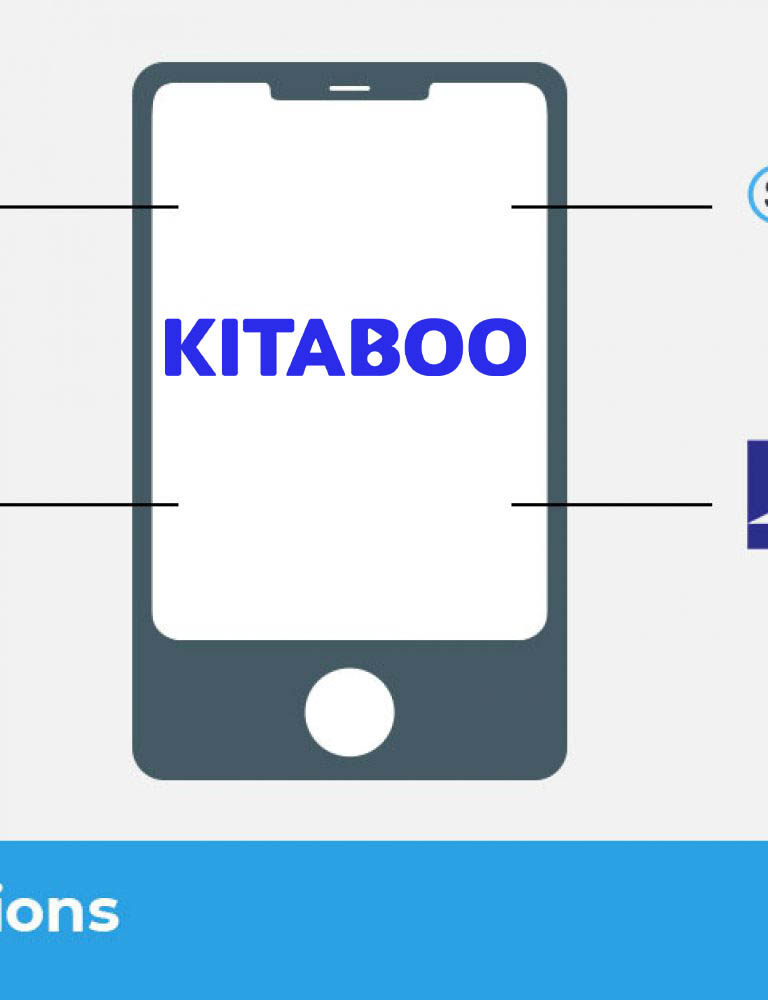Sales is an important function in every organization. It is these guys who reach out to prospective customers and help you get your clients. Companies spend around $20 billion a year on sales training, which goes to show that L&D teams are striving hard to provide the sales personnel with excellent training programs to improve their efficiency. Developing a sales training program is like an investment, where the ROI is efficient sales professionals who can effectively communicate with customers and negotiate a deal successfully and ultimately generate revenues.
Enterprises are now leveraging mobile platforms to deliver advanced sales training on the go. Using a mobile-based platform helps in maximizing the effectiveness of the training program. Since most of the employees today are tech-savvy, it seems only reasonable to use a digital platform to deliver training.
In this blog, we will look at how enterprises can improve the efficiency of a sales team by using a mobile platform for training delivery.
Listed below are some of the key advantages of using a mobile platform for sales training.
1. Anywhere, Anytime Access to Training Content
The sales team is always on the move. They’ve got to attend multiple calls and meetings in a day. It is not always feasible for organizations to pull them off their work hours and make them attend training sessions. Not only is it a waste of time and resources, but the employee might not even retain the stuff they have learned.
Designing a course module that is fit for a mobile device ensures that employees have access to the training resources all the time, irrespective of where they are. They can go through the courses whenever they have free time, and in between meetings. Short bursts of information in the form of micro nuggets will provide just-in-time information to the sales professionals, and help them stay updated even while on the go.
Guide:
How to Create Mobile-Friendly Training Content
2. Offline Access to Courses
Although the content is designed specifically for your busy sales workforce, it is quite possible that they may not have enough time to go through it during work hours. In such a situation, providing offline access to the course modules proves beneficial. They can download the content and save it on their device and read them later whenever they have the time. With an offline reading facility, sales professionals can have 24×7 access to the training content.
Also Read: 7 Steps to Designing Effective Blended Learning Courses
3. A Range of Multimedia Elements to Enhance Engagement
Developing an old-school style training module with only plain text is not considered very effective in terms of knowledge retention. Creating short video clips will help the sales reps quickly go through the content, retain and recollect the information in a much better way. You can make the mobile training content more engaging for the employees by adding interactive videos, images, animation, audios etc.
Also Read: The Best Online Corporate Training Platforms
4. Quick Assessment and Feedback
Mobile-based training delivery platforms let you add quizzes and knowledge checks after each module or in between the modules. In online assessments, the sales reps can almost instantly view the test results after submitting the answers. The real-time results help them understand and remember where and why they went wrong. The platform also allows the management to view the employees’ progress and give them feedback based on their performance.
5. Analyze the Effectiveness of the Sales Training Program
As an enterprise that is investing time and resources into developing and delivering training programs for its workforce, you would of course want an in-depth report on the effectiveness of the training program and the performance of the trainees. With an analytics tool, you could get accurate data about the number of times your employees have attempted a test or opened a certain course module. It could give you a report on the consumption patterns and the preferences and performance of your employees, allowing you to change your training methods and strategies accordingly. You can track the ROI of training efforts and the effectiveness of different training content.
HOW-TO GUIDE: Create an Online Training Program for Employees
6. Update Content Easily on a Cloud-hosted Platform
Sales professionals need to have the most up-to-date information about their field of operation at any given time. With a cloud-based delivery platform, you can simply make changes on the cloud and all the employees will receive the updated course material. This helps prevent your sales team from sharing outdated content with customers. Contrary to a traditional training manual, which you would probably have to reprint in case of new updates, updating data on the cloud saves a significant amount of printing costs.
7. Gamify The Content
Sales personnel are almost always trying to outperform each other to make the highest number of sales. Gamifying the training content will increase this competitiveness, leading to better sales outcomes. Your employees are already familiar with the gaming environment. The use of certain gaming elements such as badges, points, levels, and progress boards, helps boost employee engagement and motivation, and make learning an enjoyable experience.
Also Read: Gamification – The Secret Sauce for Employee Engagement?
8. Scenario-based Training
Including branching scenarios and simulations in your sales training program will improve your employees’ critical thinking and problem-solving skills. You can have scenarios where the employees have to select the correct course of action to proceed to the next step. Navigating through a virtual scenario helps them find solutions to potential problems that might arise in the future. Learning from a trial and error method in a risk-free environment makes them better equipped at handling difficult and challenging situations while on the job.
Also Read: 6 Benefits of Scenario-based Training over Traditional Training
9. Monitor Sales Performance with Platform Integration
Integrating the sales performance reports with the mobile training platform allows the managers to have a comprehensive view of their team’s performance metrics. Based on their sales performance you can assign them course modules that will help them hone certain skills that will eventually lead to increased efficiency on the job. You can also integrate the tool with other platforms such as LMS, CRM, marketing automation software, etc., so as to ensure a seamless learning experience.
Also Read: 5 Employee Training Management Software that You Must Consider
10. Communication And Collaboration
A sales team must be able to communicate with their clients and colleagues, and also access relevant information at a moment’s notice. A mobile-based platform is equipped with features such as chat and audio/video calls that lets them connect with their clients. Other features include discussion forums, push notifications, feedback engine, etc., to ensure that the sales team can collaborate and communicate with each other without any hindrance.
Conclusion
Sales professionals have to be well-versed with every detail and feature of the product or service that they are selling. The conviction with which they market and sell your product decides if the prospective customer will turn into your client and bring business to your organization. Hence, you must strategically plan your sales training program. A salesperson has to interact with many people every day and therefore, should be trained in a way that s/he can come across as knowledgeable about the brand, reliable and trustworthy. Using a mobile platform for sales training ensures that your sales team is always updated and well informed.
DISCOVER HOW A MOBILE-FIRST SALES TRAINING PLATFORM CAN HELP YOUR ORGANIZATION
Kitaboo is a cloud-based platform to create, deliver & track interactive sales training on a white label mobile app.
You May Also Like








